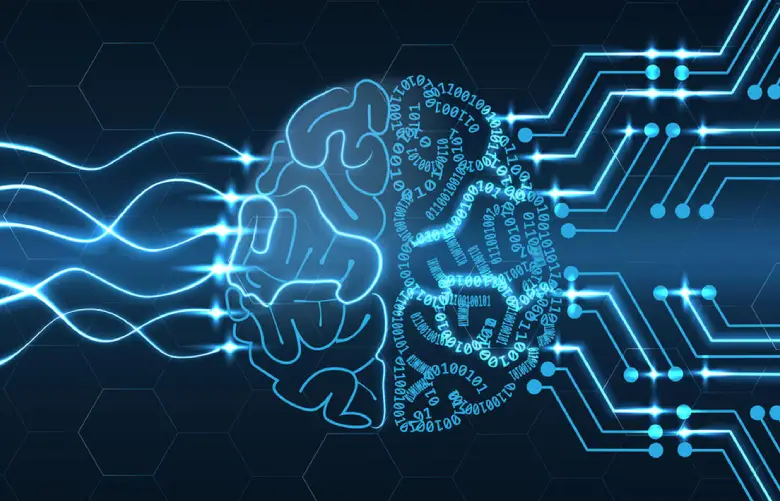In the rapidly evolving realm of deep learning, transfer learning has emerged as a game-changing technique that can significantly enhance model performance across various tasks. By capitalizing on the knowledge gained from one task and applying it to another, transfer learning enables models to learn faster and more effectively, even when faced with limited data.
This approach addresses the challenge of data scarcity and high computational demands, making it a cornerstone in developing state-of-the-art models. In this post, we’ll delve into the intricacies of transfer learning, exploring its principles, benefits, and diverse applications.
So, let’s get started.
Understanding Transfer Learning
Transfer learning has emerged as a powerful technique in machine learning, particularly in the domain of deep learning. It involves leveraging knowledge gained from one task and applying it to another, enabling models to learn faster and more effectively. In transfer learning, a pre-trained model serves as a foundation.
This model has already learned useful representations from a large dataset and is equipped with a deep understanding of certain features. These features can range from detecting edges and textures in images to recognizing basic grammatical structures in text.

The concepts of Artificial Intelligence and Machine Learning are quite important to grasp if you want to excel in transfer learning.

POSTGRADUATE PROGRAM IN
Data Science & AIML
Learn Data Science, AI & ML to turn raw data into powerful, predictive insights.
Benefits and Potential to Enhance Various Computer Vision Tasks
Transfer learning offers substantial benefits when applied to various computer vision tasks. Here’s a breakdown of its advantages and potential to enhance such tasks:
-
Speedy Model Training
- Transfer learning allows leveraging pre-trained models that are already trained on massive datasets.
- This reduces the need for training from scratch, saving time and computational resources.
-
Effective Feature Extraction
- Pre-trained models excel at extracting meaningful features from images.
- These features can be repurposed for new tasks, helping models understand complex patterns.
-
Data Efficiency
- Transfer learning mitigates the challenge of insufficient samples in scenarios with limited labeled data.
- Models can generalize better by benefiting from the vast knowledge embedded in pre-trained models.
-
Improved Generalization
- Transfer learning helps models generalize well to new data, even if the distribution differs from the training data.
- This is especially crucial for tasks where acquiring diverse and representative data is challenging.
-
Enhanced Performance
- Pre-trained models often capture low-level features like edges, textures, and shapes.
- Fine-tuning these models on specific tasks boosts their performance by learning task-specific nuances.
-
Domain Adaptation
- Transfer learning aids in adapting models from one domain to another, such as moving from real images to synthetic ones.
- This enables models to perform well on target domains with limited labeled data.
-
Reduced Overfitting
- Pre-trained models have learned from diverse data, making them less prone to overfitting than models trained from scratch.
- This leads to more robust and reliable performance on validation and test data.
-
Addressing Computational Constraints
- Training deep models demands substantial computational resources.
- Transfer learning enables smaller datasets and less powerful hardware to be used effectively, democratizing access to advanced models.
-
Multitask Learning
- A single pre-trained model can be fine-tuned for multiple related tasks.
- This multitask learning approach boosts efficiency by sharing knowledge across tasks.
-
Interpretable Representations
- Pre-trained models tend to learn hierarchical representations of data.
- These representations can offer insights into how the model perceives different aspects of an image.
Importance of Transfer Learning in Machine Learning
Transfer learning plays a pivotal role in accelerating the progress of machine learning. It addresses the common problem of data scarcity by enabling models to draw insights from existing knowledge. This saves time and allows the development of robust models even in resource-constrained environments.
Here are the Top-Backend Languages to Know in 2024.
Key Concepts and Techniques of Transfer Learning
Understanding the key concepts and techniques of transfer learning is essential to apply this approach effectively. Here’s a breakdown of these concepts and techniques in simple points:
- Pre-trained Models: Pre-trained models are neural networks trained on vast datasets for specific tasks (e.g., image classification).
- Feature Extraction: Feature extraction involves using the learned representations of data from a pre-trained model.
- Fine-tuning: Fine-tuning adapts a pre-trained model to a new task by adjusting its layers while keeping some features fixed.
- Transfer Learning Layers: Transfer learning layers refer to the sections of a pre-trained model chosen for reuse or modification.
- One-shot Learning: One-shot learning aims to learn from a single or very few examples.
- Multi-task Learning: Multi-task learning involves training a model on multiple related tasks simultaneously.

82.9%
of professionals don't believe their degree can help them get ahead at work.
Types of Transfer Learning Approaches
Here’s a more detailed explanation of each transfer learning approach.
Inductive Transfer Learning: Inductive transfer learning involves directly applying knowledge from a source task to a target task. This approach is effective when the source and target tasks share common features and patterns.
- Transudative Transfer Learning: Transudative transfer learning adapts a model from a source task to a target task using unlabeled data. This is particularly useful when labeled data for the target task is limited, but there is access to abundant unlabeled data.
- Unsupervised Transfer Learning: Unsupervised transfer learning addresses scenarios where the source and target tasks have different data distributions. The challenge lies in transferring knowledge when the underlying characteristics of the data are dissimilar.
- Domain Adaptation: Domain adaptation focuses on adapting a model trained in one domain to perform well in another domain. This is useful when the distribution of data in the target domain differs from the source domain.
- Semi-supervised Transfer Learning: Semi-supervised transfer learning combines labeled data from the target task with a smaller amount of labeled data and a larger amount of unlabeled data. This approach capitalizes on transfer and semi-supervised learning strengths to improve model performance when marked data is scarce.

Applications of Transfer Learning Across Domains
The versatility of transfer learning shines through in its applications across various domains. From medical image analysis to autonomous driving and natural language processing, transfer learning has proven its efficacy in many tasks, enabling models to achieve remarkable results with relatively little data.
Challenges and Considerations in Transfer Learning
The significant challenges and considerations in transfer learning include the following:
- Transferring irrelevant or conflicting knowledge from the source task to the target task
- Differences in data distribution between the source and target domains affecting model performance
- Striking the right balance between fine-tuning and maintaining generalization capability
- When the source task has limited or insufficient data, leading to incomplete knowledge transfer
- Difficulty in transferring knowledge between tasks with vastly different characteristics
- Deciding which layers to fine-tune and how much to adjust them requires expertise.
Transfer Learning: Enhancing Model Performance and Efficiency
Transfer learning’s impact on model performance and efficiency is undeniable. By building on pre-existing knowledge, models can achieve remarkable results in less time. This advantage is particularly evident when data is limited or computational resources are constrained.
Conclusion
In the ever-evolving landscape of machine learning, transfer learning stands out as a beacon of efficiency and progress. Its ability to bridge the gap between tasks, domains, and data availability has reshaped how we approach complex problems. By understanding its principles and harnessing its potential, practitioners can unlock new avenues for innovation and discovery.
What is Transfer Learning?
Why is Transfer Learning important in machine learning?
How is Transfer Learning applied across various domains?
What are the different types of Transfer Learning approaches?
Which frameworks and libraries support Transfer Learning?
Updated on July 4, 2024
